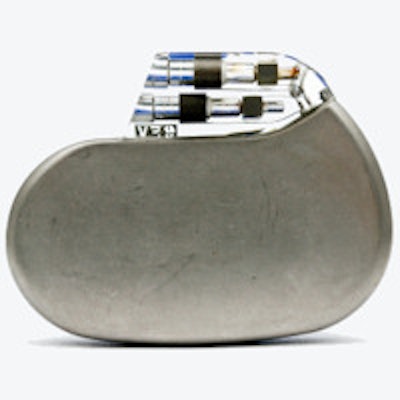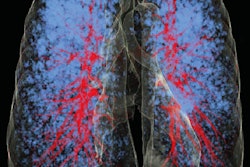
Lead shields provide a simple and inexpensive way to reduce radiation delivered to pacemakers during radiation therapy, according to a new study. The protection is modest in many instances, but can in some cases reduce radiation by 40%, cutting the risk of pacemaker failure.
An aging population has led to ever greater numbers of people receiving cardiac implantable electronic devices, and many of those at some point have to undergo radiation therapy. There are two main types of cardiac implantable electronic devices: the regular pacemaker and an implantable cardiac defibrillator, which in addition to the pacemaker's normal function, can defibrillate. Either type is susceptible to radiation damage.
There are guidelines for the maximum amount of radiation that cardiac implantable electronic devices should receive, but failures are unpredictable and can occur under the stated thresholds. Studies have shown that as little as 0.5 Gy of ionizing radiation can bring an implantable device to a halt, while 0.05 Gy is enough to slow down a device, causing a patient discomfort. To reduce the risk of any damage, therefore, some clinics cover the area directly above an implantable device with a lead sheet wrapped in plastic -- but quite how effective this is, no one has been sure.
"My impression is that lead sheets are not widely used to protect pacemakers and other cardiac devices during radiation therapy," said Louis Archambault, PhD, of Université Laval in Quebec. "However, at our clinic we've always seen lead shielding as an essentially 'free' method to reduce dose to these devices. They are inexpensive to make and they are easy to place on the patient."
Archambault and colleagues have investigated the effectiveness of lead shields for cardiac implantable electronic devices by performing clinically realistic radiation treatment on a phantom head and torso. They used two treatment methods: 3D conformal radiation therapy, which sends the radiation beam from different angles, and intensity-modulated radiation therapy, which in addition uses a multi-leaf collimator to regulate the dose (Journal of Applied Clinical Medical Physics, Vol. 16:5, pp. 411-422).
Using a plastic scintillation detector, the researchers performed extensive dose measurements on the phantom at different depths close to the beam edge, with and without the device. This allowed the measurements to be modelled in a standard treatment planning system, and also be used to create a dose prediction model. In the final step, the researchers treated the phantom with beam configurations from real patient cases, allowing them to test the precise dose reduction offered by the lead shield.
On average, the lead shielding reduced dose to the implantable device by 19 ± 13%. The reduction was greater for breast cancer cases at 31 ± 15%, and in isolated cases reached as much as 40%. Importantly, the results also showed that the dose prediction model was far more accurate than the treatment planning system, with the former deviating only 14% from measurements and the latter deviating 71%.
"I think our work demonstrates that using a lead shield is a simple and inexpensive method for reducing dose to a cardiac implantable electronic device," Archambault said. "Even if the dose reductions are modest most of the time, [the shield] can nevertheless represent over 40% reduction in some cases. Because there is no data supporting a fixed dose threshold below which a cardiac implantable electronic device is completely safe from perturbation, any dose reduction should be welcome if it does not add a burden on the clinical workflow."
Archambault steps short of recommending widespread usage of lead shields, however, as there may be better types of shields available.
"We are currently working with a cardiologist to perform a vast, retrospective analysis of patients with pacemakers and other implantable devices treated in radiotherapy," he said. "Our aim is to better understand the causes of abnormal events seen during or shortly after radiation therapy. This work should help us establish guidelines for the use of shielding."
© IOP Publishing Limited. Republished with permission from medicalphysicsweb, a community website covering fundamental research and emerging technologies in medical imaging and radiation therapy.



















